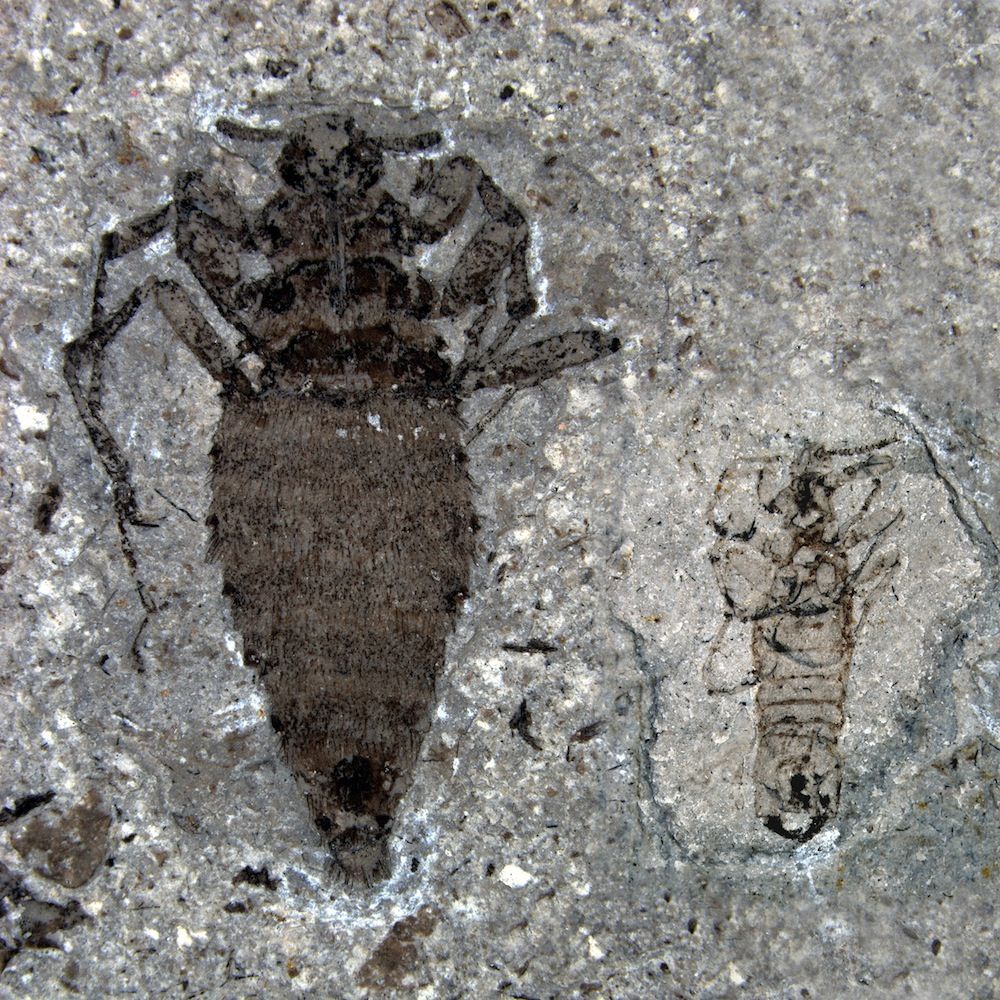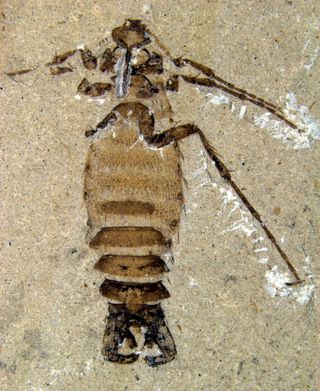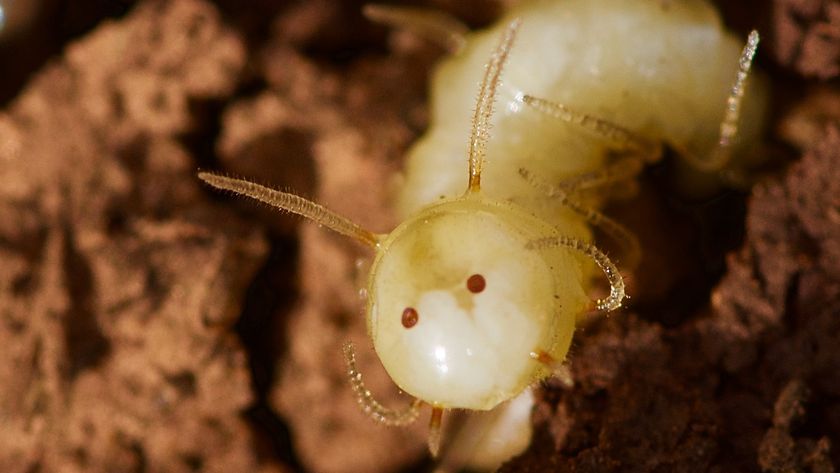Giant Bloodsuckers! Oldest Fleas Discovered

The oldest fleas were five to 10 times larger than today's bloodsuckers, new research finds. But at least they couldn't jump.
These ancient bloodsuckers are the oldest fleas ever found, and the oldest example of bloodsucking parasites in the fossil record, study researcher André Nel of the Muséum National d’Histoire Naturelle in Paris told LiveScience.
These early fleas lacked the strong hindlegs of modern fleas, Nel said.
"Their biology and behavior was certainly different, more like that of a louse creeping among the fur and feathers of the hosts," said Nel, who, along with his colleagues, analyzed nine fossil specimens of the fleas discovered in outcrops in China.

The fleas lived in the Mesozoic era, a chunk of geologic time extending from 250 million years ago to 65 million years ago and includes the Jurassic period. They were giant compared with today's fleas, with one female specimen's body longer than 0.8 inches (2 cm), said study researcher Diying Huang, a researcher at the Chinese Academy of Science in Nanjing, China. Modern fleas don't get much larger than 0.1 inches, or 3 mm, in length. [Album: The Cutest Bugs]
The fleas' size and tough mouthparts would have made it easy for them to feast on large hosts — even dinosaurs.
"Their long siphonate dentate mouthparts may easily penetrate dinosaur skin," Huang told LiveScience.
Sign up for the Live Science daily newsletter now
Get the world’s most fascinating discoveries delivered straight to your inbox.
The fossils, which reside in the collections of the Nanjing Institute of Geology and Palaeontology, fill in some of the gaps of flea evolution, Nel said. The first fleas evolved from ancestors that fed on plant fluids. Some then evolved from plants to animals, becoming bloodsuckers. These parasites lost their wings and developed grasping legs to cling to fur and feathers.
At some point still not pinpointed in the fossil record, Nel said, fleas evolved amazingly strong hind legs, which can catapult them 50 to 100 times their body length.
The Jurassic bloodsuckers are detailed Wednesday (Feb. 29) online in the journal Nature.
You can follow LiveScience senior writer Stephanie Pappas on Twitter @sipappas. Follow LiveScience for the latest in science news and discoveries on Twitter @livescience and on Facebook.

Stephanie Pappas is a contributing writer for Live Science, covering topics ranging from geoscience to archaeology to the human brain and behavior. She was previously a senior writer for Live Science but is now a freelancer based in Denver, Colorado, and regularly contributes to Scientific American and The Monitor, the monthly magazine of the American Psychological Association. Stephanie received a bachelor's degree in psychology from the University of South Carolina and a graduate certificate in science communication from the University of California, Santa Cruz.


